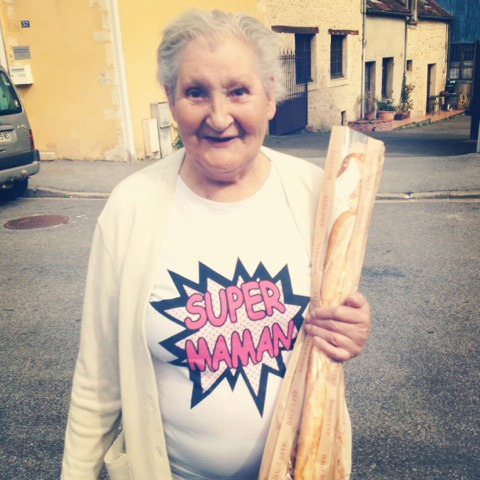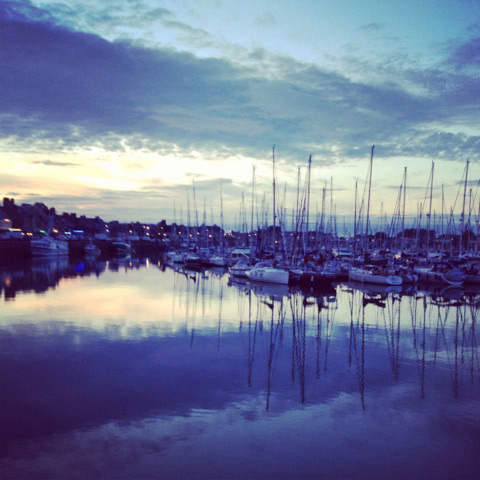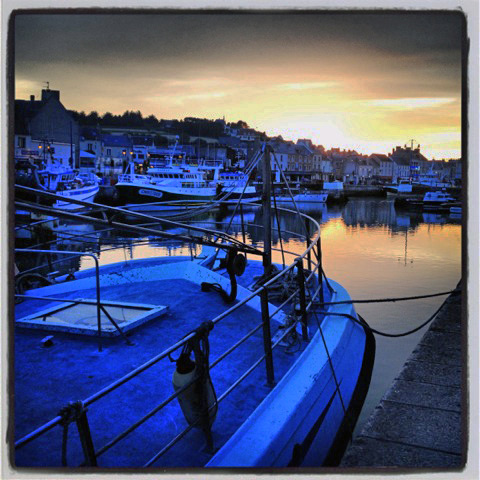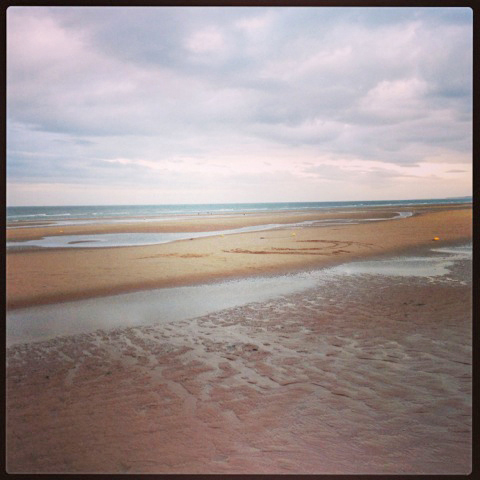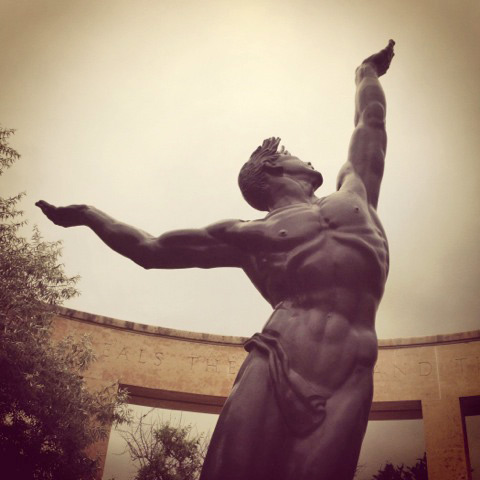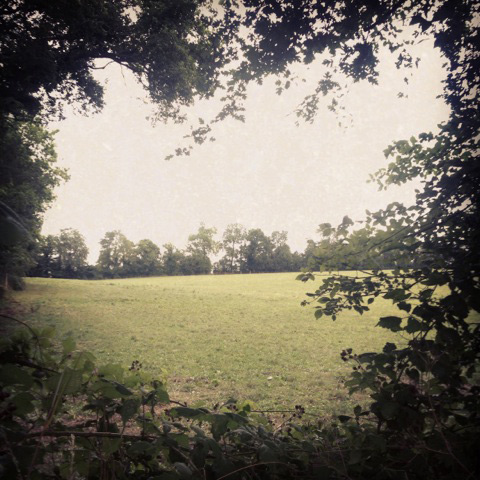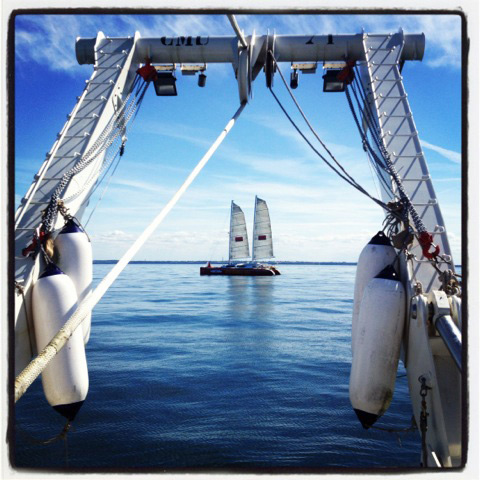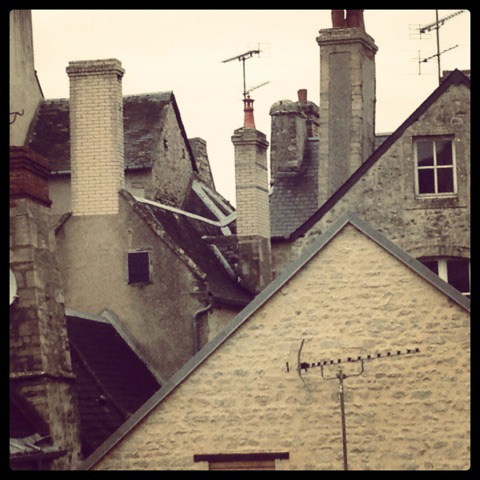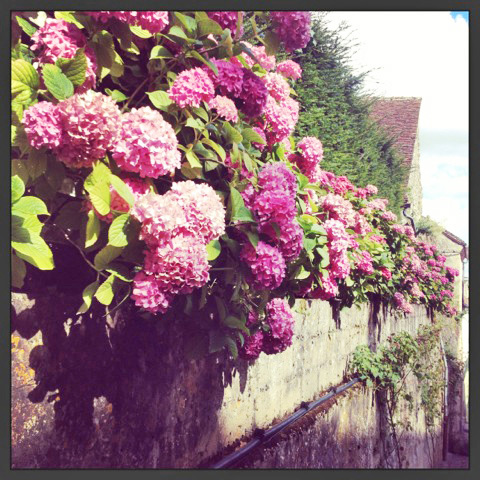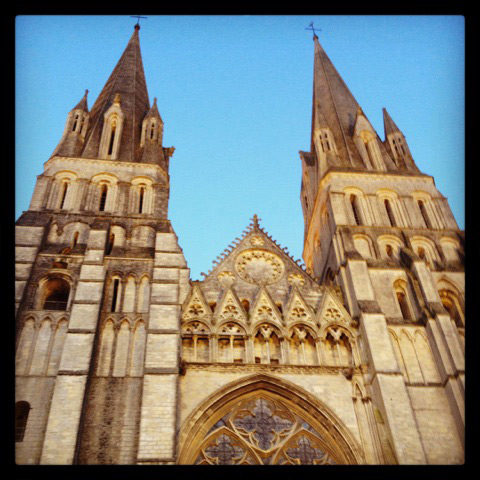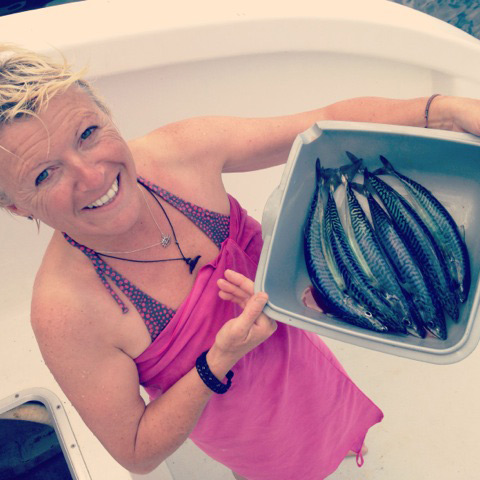Normandy Travel Tips from Doug Hamilton
Doug Hamilton is the producer/director/writer of D-DAY’S SUNKEN SECRETS - the PBS-TV special documentry commemorating the 70th anniversary of the D-Day landings on the coast of Normandy, France. D-DAY’S SUNKEN SECRETS will air May 28th on your PBS station (check local listings for time). Doug is an inveterate authentic traveler. In this guest post he shares Normandy travel tips learned in the months he spent in France creating this show.
June 6th will be the 70th anniversary of the D-Day landings on the coast of Normandy, France. World leaders will gather on the beaches there to commemorate this World War 2 battle that was the largest amphibious assault in all of history and is arguably the single most important event to shape the 20th century and also how you live your life today. After all, this battle began the defeat of the Nazis, stopping their march towards world domination, and was essential to reestablishing the liberty our lives are built on.
As momentous as the event was – it also makes for a fantastic place for any curious traveler – either for the anniversary itself (if you can still get a hotel room) or really any time of the year. And it’s not just for military history buffs. I’ve spent countless weekends strolling French flea markets or wandering Paris lost in the fantasy of its history, its beauty, and its croissants. But I never visited the beaches of Normandy, until this past year when I was directing a PBS documentary for the 70th anniversary. Once there, I found myself both enchanted and moved to tears. It was one of the best places I’ve ever traveled. I would not hesitate to recommend the trip to anyone from 80 year olds who lived through WW2 to iPhone-obsessed teenagers who might not even know the name Eisenhower.
Visiting Normandy
It’s all there – from great history to great food. It’s inspiring and ridiculously charming, and it’s very easy to get around. Parisians go to this area for a beach holiday, so it’s got something for everyone. But a trip focused on exploring this significant chapter in history won’t disappoint. I’d never paid much attention to military history, yet I found myself drawn in by one of the most fascinating periods of world history and blown away by the overwhelming logistical brilliance of the D-Day planners. I even became engrossed by the tactical details of warfare, like understanding the nuts and bolts of infalating fire (that would be military lingo for a strategy of arranging your machine guns to be most effective – read: deadly.) Remember I’m the guy who’d rather sit in a café or wander the Louvre, but this stuff is truly extraordinary.
Normandy Travel Tips
Despite the importance to world history – and macho stuff of war – it’s also an easy place to explore, and it can be as romantic as it is studly. A pleasant two hour train ride from Paris brings you to Caen, an efficient hub-city where you can rent a car and quickly be in the French country side of Normandy with its famous cows, delicious cream and picturesque rolled bales of hay. Drive 45 minutes to Port en Bessin, a charming fishing village to stay the night and tend to your jet lag. I stayed in the comfortably efficient Ibis hotel there, but I also found some charming (as in right out of the pages of a home design magazine) apartments to rent, owned by a former Parisian who moved to this charming village and speaks perfect English.
More Normandy travel tips: In route to Port en Bessin, you should stop for an hour or two on the outskirts of Caen at one of the best WW2 museums anywhere in the world to get an interactive introduction to the basics of the battle and the impressively presented causes of WW2 (built as a downward sloping display that traces the “decent” into the chaos that lead to the war.)
The Longest Day
Before crossing the Atlantic, I’d suggest brushing up on your history by viewing the films Saving Private Ryan, of course, and The Longest Day, the 1964 Oscar Best Picture that will give you a great history of how the day unfolded, told with every famous actor of the time from Henry Fonda to Richard Burton. There is a remarkable shot in that movie of a key battle to take the small port of Ouistreham. The traveling shot, which you’d swear is from a helicopter, is uncut for at least fours minutes of nonstop battle. It is one of those moments in film that fills you with tension and amazement because you can’t believe that they were able to pull it off without the kind of CGI that we’ve become accustomed to.
The reason I go on at such length about it now is that the shot was actually filmed in Port en Bessin, so when you finally wake up from your jet lag slumber, you can walk this working fishing port and actually see how the directors pulled it off. (There were 3 directors involved in shooting the film, all corralled by the great Darryl Zanuck.) You don’t have to be a filmmaker to have a satisfying “ah ha moment” when you stand on the banks of the port and see how this clever shot was done. (Also, look for the faint impression of the movie’s art directed letters “Port de Ouistreham” now blended into some charming old signage painted onto one of the buildings there.)
The Inspiring D-Day Beaches of Normandy
There were five landing beaches in the invasion – codenamed Utah, Omaha, Gold, Juno and Sword. You can visit all of them, but really a visit to two, maybe three, is plenty. The roads are good and the signs are easy to follow, even if you don’t parlez francais. A visit to Omaha Beach, however, is a must. This was where the bloodiest fighting was – depicted in that wrenching opening 20 minutes of Saving Private Ryan. The American Cemetery that overlooks the beach there has an excellent small museum explaining the battle, but it is the seemingly endless number of beautiful white crosses (and the occasional Star of David) that stretch as far as the eye can see – and the heart can bear – that you will forever remember.
The cost of the war – as seen in the names and ages of these young soldiers – breaks your heart and immediately fills it with pride and respect. It is truly one of the most magnificent experiences you will ever have, I promise. A minister I met from Indiana, who was a young solider here 70 years ago, returns annually to lead a group from his church on a tour. He always asks that everyone wander out into the cemetery, chose one grave, and have a moment of reflection for this young, young man who gave his life for his country. (The minister also takes his group to the German cemetery not far away and asks them to do the same.) While at the American Cemetery, you can easily – and absolutely should – walk down to the beach itself. Today it is free of any sign of the violence that took place here, and yet, you can’t help but feel something stirring your soul.
(And while we are on the subject of soul – I can’t help but mention that there is one of the best Sole Meniere lunches I have ever had at a nearby small hotel restaurant called, La Sapieree. A relaxed, home cooked atmosphere made this one of my top restaurant picks.)
More Normandy Travel Tips
Another memorable stop is just outside of Port en Bessin at a peculiar private museum called, Le Musee de Epave – the Museum of Wrecks. It is filled with some of the military hardware salvaged from the ocean here by a French scuba diver named Jacques Lemonchois. He recently passed away, but I was told that his much younger wife still runs the information desk. (Throughout Normandy, there are a collection of small private museums – some good, some ridiculously bad – with store mannequins in bad wigs posed to re-enact the battle, so choose carefully.)
How NOVA got the story
The PBS special I was filming is for NOVA, the science program. One of the things we did was to participate in a high tech sonar survey off the coast here – that reveals at least 400 shipwrecks and helps to pull back the water from this hidden battlefield. I don’t know if you can afford to hire one of the mini-submarines the expedition brought in from Canada to film these wrecks, but if not you can see a few for yourself, on dry land, at Le Musee de Epave. You can also watch the NOVA special called D-Day’s Sunken Secrets, which airs May 28th on your local PBS channel.
More things to do in Normandy
Mix in some great hiking with your history by heading south along the cliffs from Port en Bessin. Here you can still see – and climb on – a few of the more than 15,000 concrete bunkers that were built as part of Hitler’s infamous Atlantic Wall – one of the largest military defense structure ever constructed. The walk has spectacular views of the sea and pastoral farms that fill the Normandy countryside.
I’d also suggest spending a night or two in Bayeaux, one of the only towns in Normandy that was not completely flattened by Allied bombing during the war because the Queen of England’s heritage dates back to this small Normand town. She made a special request to Prime Minister Winston Churchill to save it – and he did. What a gift that is! It is one of the most elegant towns I’ve ever seen, where you can just wander past beautiful mansions and big pink bushy splashes of hydrangeas that seem to glow brighter in Normandy than anywhere else. The cathedral is amazing – and in summer they do one of those gaudy but spectacular light shows on it. The town is probably best known for the famous Bayeaux tapestry, an ancient weaving (commissioned in 1070) that chronicles the events leading up to the Normand conquest of England – important enough to be listed on the UNESCO World Heritage register.
Where to stay
I stayed in the luxuriously comfortable Hotel Villa Lara, but my PBS colleague booked into the Hotel Le Lion D’Or, which was one of the Allied Command headquarters in the months after the war. When my colleague checked out of her room in the morning the front desk informed her that she had slept in the bed that Eisenhower did, which thrilled her no end even though the bed itself gave her a back ache. One of the best French restaurants I’ve ever eaten in (and I’ve eaten in some of the Michelin three stars) is just at the edge of the downtown shopping district and owned by an up and coming chef. It’s called L’Angle Saint-Laurent and is open for a lovely lunch or elegant dinner after you’ve finished your stroll around this storybook town. Perhaps end your trip to Normandy there, it will be like you’ve fought the battle and can now reap the rewards of peace, liberty, and great wine.
Doug Hamilton is a veteran television journalist for CBS News 60 Minutes and of PBS documentaries like NOVA, FRONTLINE, and American Masters. Awards include three Emmys, two George Foster Peabody Awards, AAAS Science Journalism Award, Writer’s Guild Award, Cine Golden Eagle, and an Investigative Journalism Award from the Society of Professional Journalists. He directed the award winning feature release documentary, BROADWAY IDIOT, that will be broadcast on Showtime in 2014. Hamilton has taught at the Graduate School of Journalism, University of California, Berkeley and is the official photographer for the Atlantic Theater Company in New York City. Click this link to view a preview video of D-DAY’S SUNKEN SECRETS and a recent TV interview with Doug Hamilton.
Category: France

